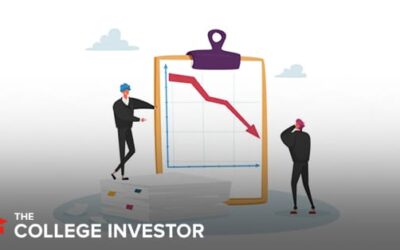Key Points
- Multiple sources are reporting that the Department of Education plans to restart interest on loans in the SAVE forbearance on August 1, despite no court order requiring it.
- Loan servicers are unlikely to communicate the change with sufficient notice, and upwards of one million IDR applications remain backlogged, leaving borrowers unable to change repayment plans.
- Borrowers will accrue interest even though no payments are due, creating confusion and adding new costs to borrowers.
The Education Department is preparing to resume interest charges on student loans for nearly 8 million borrowers currently in forbearance under the SAVE income-driven repayment program. The change is proposed to take effect August 1, though borrowers are not yet required to make monthly payments.
According to reporting by Politico and other sources, the department cites a February court injunction as justification. An update on Nelnet also showed the following message:

However, a review of the relevant orders and opinions (PDF File) makes clear that no federal court has directed the department to resume charging interest. The decision appears to be a discretionary policy change under the Trump administration.
This development comes as millions of borrowers remain in legal limbo.
The SAVE plan was originally paused following litigation brought by a group of Republican-led states. While the program’s key provisions, including forgiveness for low-income borrowers after 10 years and interest subsidies for unpaid amounts, are blocked, payments and interest had also been paused.
The SAVE plan was then officially ended in the Big Beautiful Bill, and borrowers were looking at a transition to new repayment plans that don’t start until July 1, 2026. While that may still be the case, it appears that the Department of Education believes that interest should be accruing during this time.
If this plan goes into effect, the SAVE forbearance will now continue without the interest benefit.
Editor’s Note: This article was updated to reflect the latest messaging from Nelnet on StudentAid.gov as well as information from the Department of Education press release.
Would you like to save this?
No Court Appears To Have Required This Decision
Court documents show that the 8th Circuit’s rulings have blocked implementation of the SAVE plan, but have not ordered the Department to resume interest charges. The most recent opinion, issued in February 2025, instructs a lower court to broaden its injunction, but nowhere does it demand resumption of interest.
Here was what the original August 2024 injunction stated:
The Government is, for any borrower whose loans are governed in whole or in part by the terms of the Improving Income Driven Repayment for the William D. Ford Federal Direct Loan Program and the Federal Family Education Loan (FFEL) Program, 88 Fed. Reg. 43820, enjoined from any further forgiveness of principal or interest, from not charging borrowers accrued interest, and from further implementing SAVE’s payment-threshold provisions. This injunction will remain in effect until further order of this court or the Supreme Court of the United States. The administrative stay is hereby superseded.”
Emphasis added. In the ruling, the argument for the blocking of interest was clear – to not harm the borrowers. As was written in the ruling: “Among the considerations here are that all borrowers currently impacted by our administrative stay are in administrative forbearance and thus not required to pay principal or interest on their loans.“
Despite having maintained interest waivers through the first half of 2025, the Education Department is now reversing course – and for what reason is unclear. Their press release also made clear that borrowers will have to repay the accrued interest after August 1, 2025, which appears contrary to the court order.
This decision also complicates matters in light of the One Big Beautiful Bill, which was forcing borrowers out of SAVE anyway and into an amended version of IBR. That bill also included a new income-based plan, the Repayment Assistance Plan (RAP), set to take effect in July 2026, that borrowers could opt into.
By adding this change with little warning, and given that more changes are coming in 9 months, this is going to cause unnecessary chaos and harm.
Loan Servicers Unprepared And Borrowers Uninformed
The change is expected to catch borrowers off guard as there are only 22 days until this change is set to go into effect.
Even if the communication were to go out today, its unlikely many borrowers would be able to take any actions before interest starts accruing.
The problem is made worse by the current backlog of more than 1.5 million income-driven repayment (IDR) applications. Borrowers who try to switch to another available IDR plan may find themselves stuck in limbo, unable to act before interest begins accumulating.
There are roughly 8 million borrowers in the SAVE forbearance. There would be no logistical way for loan servicers to handle the massive requests for changes. The system simply cannot process them quickly enough.
That delay traps borrowers in a situation where interest accrues but payments are not yet due, further growing balances without any way to stop it.
Economic Impact
The cost of this decision could be staggering. According to estimates by the Student Borrower Protection Center, the typical affected borrower will see more than $3,500 in annual interest added to their balance: roughly $300 per month. In total, the policy is expected to add more than $27 billion in interest charges over the next 12 months.
These charges will disproportionately affect low-income families. Nearly half of those enrolled in SAVE earn less than 225% of the federal poverty line. Many of these borrowers qualified for $0 payments under SAVE. With interest now returning, they will see their loan balances grow despite having no payment requirement or control over their repayment status.
Other Questions Remain
The department’s justification hinges on a changing interpretation of the 8th Circuit’s order and may face legal challenge.
The timing also places new burdens on loan servicers, many of whom are already operating with limited staff and systems. With the RAP and IBR plan transition likely to start in July 2026, this change may further strain servicers as they prepare for yet another overhaul.
And nothing has been finalized for the borrowers who’ve been accruing incorrectly during this period of time either. Will this be resolved before interest starts accruing altogether?
For now, borrowers are left with few answers. Even if interest does begin to accrue in August, payments will likely not resume until December at the earliest – as many borrowers are already seeing their forbearance dates pushed to October 31 or November.
Borrowers unable to switch plans, contact servicers, or receive timely information face the worst of all outcomes: higher balances and no clear path forward.
What Happens Next?
The Department of Education is expected to issue a public statement soon, possibly confirming the change and offering new guidance. It appears that some loan servicers, like Nelnet, have posted status updates on their respective loan servicer portals.
But for the nearly 8 million borrowers affected, the damage may already be underway.
With loan balances set to grow, servicers under pressure and facing massive changes, and legal authority unclear, this shift is likely to cause even more chaos in the student loan system.
Borrowers stuck in the SAVE forbearance are being asked to absorb the cost of policy failure, litigation delays, and administrative inaction, all without any short-term certainty of what comes next.
Don’t Miss These Other Stories:
Full Impact: Changes To College Financial Aid And Higher Ed
SAVE Student Loan Plan Timeline Estimates: What To Expect
Can President Trump Reverse Student Loan Forgiveness?
Editor: Colin Graves
The post Student Loan Interest Will Resume For SAVE Borrowers appeared first on The College Investor.






0 Comments